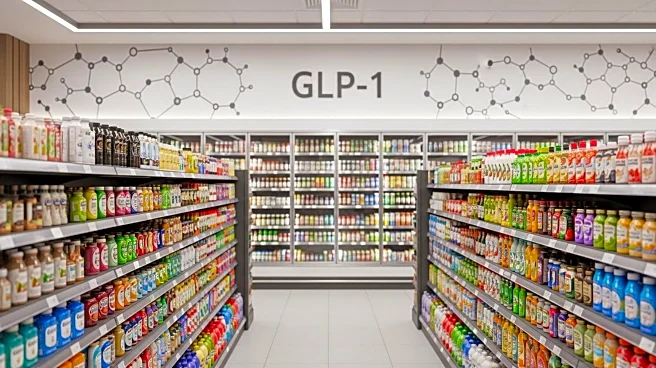What's Happening?
Convenience stores are increasingly capturing a larger share of spending from GLP-1 medication users, according to Sherry Frey, Vice President of Total Wellness at NielsenIQ. Speaking at the CSP Center Store Forum, Frey highlighted that GLP-1 medications, which influence hunger and taste perception, are reshaping consumer spending habits. Data shows that spending at convenience stores by GLP-1 users has increased by 1.1%, while other retail channels have seen declines. GLP-1 users also make more frequent trips to convenience stores compared to non-users. The trend suggests that convenience stores are well-positioned to cater to the needs of health-conscious consumers seeking quick and accessible options.
Why It's Important?
The shift in spending patterns among GLP-1 users presents a significant opportunity for convenience stores to expand their market share. As these medications become more popular for weight loss, convenience stores can capitalize on the increased demand for health-oriented products. By offering a range of nutritious and convenient food options, these stores can attract a growing segment of health-conscious consumers. This trend also highlights the potential for convenience stores to innovate and diversify their product offerings to meet changing consumer preferences. The ability to adapt to these trends could enhance the competitive edge of convenience stores in the retail landscape.
Beyond the Headlines
The rise of GLP-1 medications and their impact on consumer behavior may also have broader implications for the food and beverage industry. As consumers prioritize health and wellness, there could be a shift towards more nutritious and low-calorie products across various retail channels. This trend may encourage manufacturers to develop new products that align with the dietary preferences of GLP-1 users. Additionally, the growing focus on health and wellness could influence public health policies and initiatives aimed at promoting healthier lifestyles. The long-term effects of these medications on consumer behavior and industry dynamics warrant close observation.











